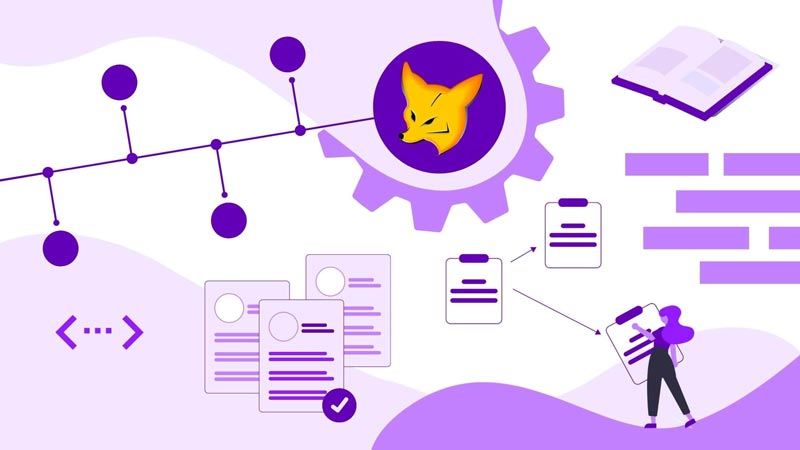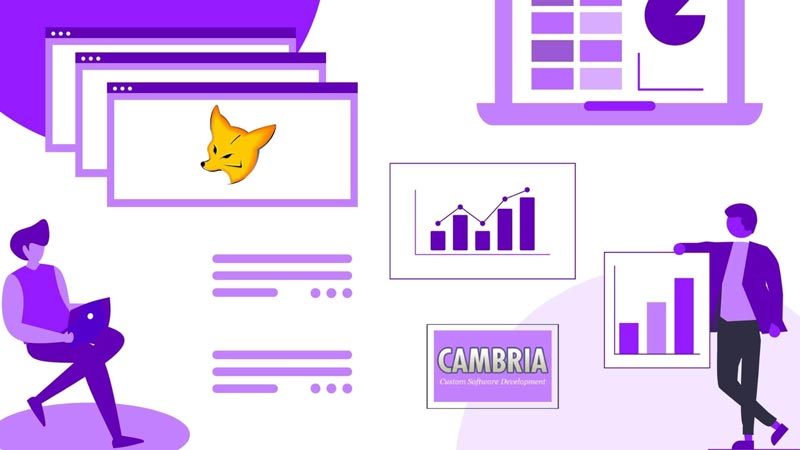Visual FoxPro History
Visual FoxPro, also known as VFP, is intimately linked with its own relational database engine, which extends the xBase capabilities of FoxPro to allow SQL query and data manipulation.
Visual FoxPro, unlike other database management systems, is a full-featured, dynamic programming language that does not need the usage of a separate general-purpose programming environment.

It is capable of producing not just standard programs, but also middleware and online applications.
Microsoft opted to discontinue development of Visual FoxPro in order to focus their resources on other products in their range. The last release was Visual FoxPro 9 (VFP9), and the extended support term expired in 2015. There are no more update patches for security, stability, or upgrades since Microsoft has discontinued support for Visual FoxPro.
As a result, existing VFP apps lack a competent pool of resources to deliver bug fixes and vulnerability updates.
Visual FoxPro Programming at Cambria
Cambria started life in 1984 offering programming services in dBase2, Turbo Pascal (the predecessor of Delphi) and C/C++.
Our service in dBase2 grew rapidly but by the end of the 1980s much of this type of database programming moved to Visual FoxPro which was a superior development platform. Throughout the late 1980s, and 1990s and until web programming became dominant, Visual FoxPro was our main activity at Cambria.
We have been doing programming in FoxPro since the 1980's and today we still do a significant amount of FoxPro support and conversion of FoxPro databases to Microsoft SQL Server or Access.
Cambria has written hundreds of Visual FoxPro programs over the years. In the 1980's and 1990's we were basically a Visual FoxPro programming company since the great majority of our work in those days was in FoxPro.
Today we offer Visual FoxPro development from our offices in California and Manila in the Philippines.

Visual FoxPro Programming at Cambria
Microsoft Corporation, who owns Visual FoxPro, announced on January 12, 2010 that mainstream support for the product has ended. Microsoft continued its "extended support" until January 13, 2015.
There are presently no plans by Microsoft to release any further updates or patches for FoxPro so, in effect, practical support has ended.
What does this mean for the user of a FoxPro program? Perhaps nothing at all.
If the program is functioning in a satisfactory manner then there is no need not to continue to use it so long as you have hardware that can run it.

However, if the time comes that the program can no longer be adapted to changing conditions, or support is harder and harder to come by due to a decline in FoxPro specialists, then the user may wish to upgrade the program to something current.
Cambria is well suited to help in such a migration, or to advise if one is even needed, because we are not only a FoxPro programming company but we have programming teams in all currently popular programming areas as you will see if you visit other pages on this website.
In fact many of our old FoxPro hands are still with us but now are now programming in other languages. They would be perfectly placed to help out if help is needed. But do not interpret this as advising you to convert.
There is an old saying "it's rotten but it's written" that applies to aging software. In other words, if it is still doing the job why go to the expense of rewriting it.
Visual FoxPro Support and Maintenance
Because of the Microsoft decision to drop support of Visual FoxPro in the coming years all of the FoxPro work we do today is the maintenance of older software.
We are happy to do this and rarely have a week in which we are not supporting one program or another, usually one we wrote in the past.
If the program does the job for you and nothing is needed but fixing an occasional bug or adding a small module then this is a perfectly sensible alternative to re-writing the program.
As computer hardware evolves it will be more and more difficult to keep those old FoxPro programs running as systems move away from support of the 32-bit architecture of Visual FoxPro.
As a result we are getting an increasing number of requests to convert FoxPro programs and migrate them to different platforms. Recent years have seen our .NET programming services take over from FoxPro as our main activity.
Consequently we are perfectly placed to execute VFP to .NET conversions and our other groups are as eager to offer VFP conversion to PHP, Perl or other specialties.
Visual FoxPro to ASP.NET Conversion
Cambria specializes in controlled migrations of Visual FoxPro to ASP.NET web applications.
We have a track record of successfully converting old Visual FoxPro programs to ASP.NET. Because of its native optimization, built-in visual components, continuous monitoring, and server-side execution, the ASP.NET framework is perfect for developing big web applications in less time.
Visual FoxPro offers strong COM compatibility with ASP.NET components, which makes it simple to create ASP.NET web applications. Cambria extracts information from forms, files, and databases using custom programming and allows you to personalize the transformation.
Visual FoxPro to C#.NET Conversion
Visual FoxPro and C# are not in any manner compatible for an automated conversion or migration. Using a commercial tool to convert VFP code to C# is quite tough. Converting Visual FoxPro to C# is done correctly by implementing business logic in a C#.NET application.
This can be accomplished through the use of the same interface as the legacy program or through a complete rewrite, giving organizations the freedom to upgrade their apps to meet specific business demands.
Cambria's .NET programmers are experts in C#.NET application development.

